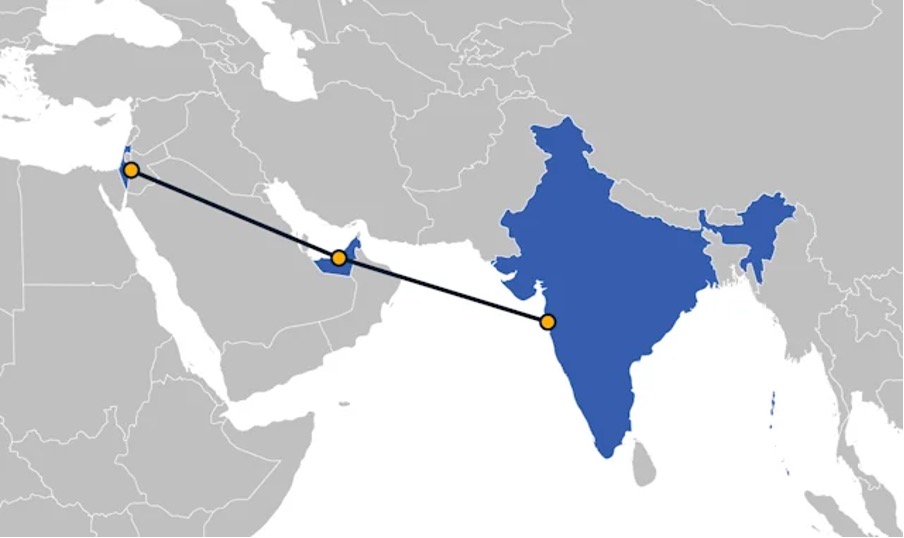In the heart of the bustling subcontinent of India lies a tapestry of history, culture, and commerce that has woven its way through centuries. This corridor, stretching from the Indian subcontinent to the Middle East and onward to Europe, is a tale as old as time itself, where spices mingled with silk, and faith intertwined with trade.
The India-Middle East Corridor, sometimes referred to as the India-Middle East Economic Corridor, is a multi-dimensional initiative aimed at enhancing economic and strategic cooperation between India and countries in the Middle East region. The corridor includes several aspects and objectives. These are explained below.
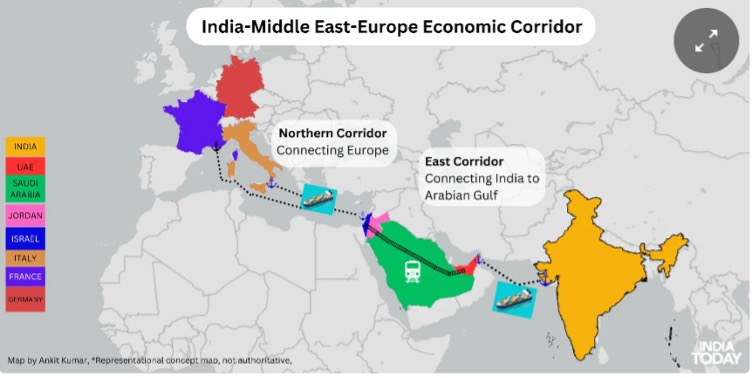
Early Life & Education
Geographical Scope: The corridor encompasses regions in India and countries in the Middle East, primarily in the Arabian Peninsula and parts of North Africa. It covers areas with significant economic and strategic importance.
Economic Integration: One of the key objectives of the corridor is to promote economic integration and trade between India and Middle Eastern countries. This includes the exchange of goods, services, and investments. It aims to create a seamless economic connection, facilitating trade and economic growth.
Energy Security: Energy security is a critical component of the corridor. India is a major energy consumer, and the Middle East is a significant supplier of oil and natural gas. The corridor seeks to ensure a stable and reliable energy supply for India by fostering energy partnerships with Middle Eastern nations.
Infrastructure Development: Infrastructure development is a crucial aspect of the corridor’s objectives. This includes the construction of transportation networks, such as roads, railways, ports, and airports, to facilitate the movement of goods and people. It also involves the development of industrial and logistics hubs.
Cultural and People-to-People Exchanges: Beyond economic and strategic objectives, the corridor promotes cultural exchanges and people-to-people connections. It encourages cultural understanding, tourism, and educational partnerships between India and Middle Eastern countries.
Strategic Partnerships: The corridor has strategic significance for both India and the Middle East. It involves strengthening diplomatic ties and strategic partnerships in areas such as defense and security. The cooperation aims to address shared security concerns and enhance regional stability.
Diversification of Trade Partners: For India, the corridor provides an opportunity to diversify its trade partners. While India has historically had strong economic ties with Western countries, the corridor allows it to expand its economic engagement with Middle Eastern nations, reducing dependence on a single region.
Economic Growth and Job Creation: Another important objective is to stimulate economic growth and job creation in both India and the Middle East. By fostering trade and investment, the corridor has the potential to boost economic activity and create employment opportunities.
Connectivity: Improving connectivity is a fundamental goal of the corridor. This includes enhancing air, sea, and land connectivity, as well as digital connectivity through telecommunications and the internet. Enhanced connectivity facilitates smoother trade and communication.
Sustainable Development: The corridor also emphasizes sustainable development practices, including environmental considerations. It seeks to promote sustainable economic growth that respects ecological balance and addresses environmental challenges.
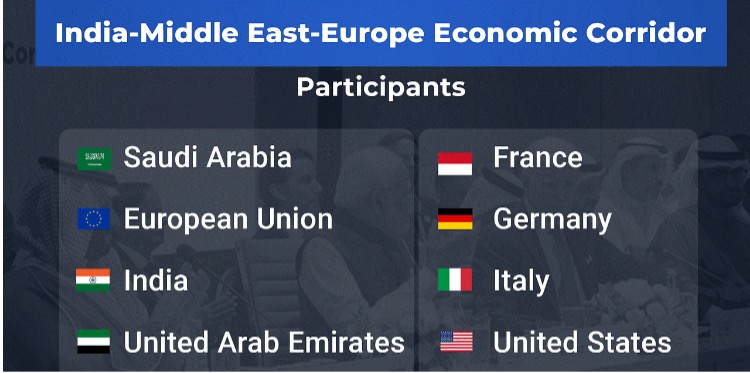
The Silk Road of Dreams & A Digital Revolution
From the spice-laden markets of ancient India to the courts of Europe adorned with silken treasures, this corridor was seen as the bridge where dreams met reality. It was a passageway for flavors that enriched both cuisine and culture
India’s emergence as a technological powerhouse has paved the way for a digital Silk Road. Software engineers in Bangalore collaborate with counterparts in Europe and the Middle East, shaping the global digital landscape
The Crossroads of Faith
A crossroad of faiths, like Hinduism, Buddhism, and Jainism, welcomed pilgrims from the Middle East and Europe who sought spiritual enlightenment along its sacred route. The corridor resonates with stories of spiritual journeys that transcended geographical boundaries.
The Tapestry of Empires
Empires rose and fell along this corridor, leaving indelible imprints on history. The Mughals, with their grandeur and architectural marvels, shaped India’s cultural landscape. The Taj Mahal, an enduring symbol of love, drew the admiration of kings and queens from Europe.
Challenges, Government Policies, and Global Perspectives: Navigating the Present and Future
Along with the historical significance of this corridor, we must also confront the challenges it faces in the present and envision its future on the global stage.
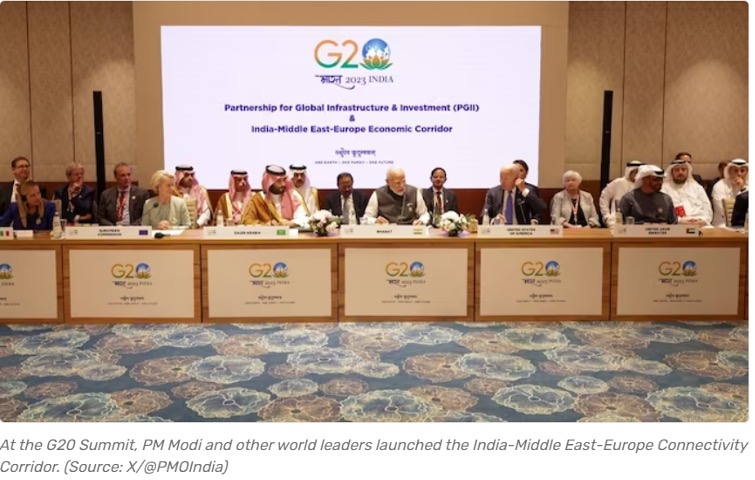
Government Policies and Present Situation
The India-Middle East-Europe Mega Economic Corridor is a transformative initiative announced by Prime Minister Narendra Modi during the G20 summit, involving India, UAE, Saudi Arabia, European Union, France, Italy, Germany, and America. This corridor, part of the Partnership for Rail and Shipping Corridors Global Infrastructure Investment (PGII), aims to enhance infrastructure in developing nations and offer an alternative to China’s Belt and Road Initiative (BRI). It prioritizes transparency, climate resilience, gender equality, and health infrastructure development, addressing concerns about unsustainable debt practices associated with China’s BRI.
Connecting Europe, the Middle East, and Asia through railways and sea routes, the corridor’s objectives include economic integration, energy security, and enhanced connectivity via undersea cables, energy grids, and telecommunications lines. It comprises two main corridors: the Eastern Corridor linking India to the Arabian Gulf and the Northern Corridor connecting the Arabian Gulf to Europe. This initiative seeks to facilitate cross-border trade, digital connectivity, and clean energy transport while promoting environmental sustainability and social development.
In summary, the India-Middle East-Europe Mega Economic Corridor, in conjunction with the PGII, represents a significant shift in global infrastructure investment. It emphasizes sustainability and economic development, offering potential benefits for all participating nations.
Europe's Concerns Regarding India's Energy Choices
Europe’s concerns about India’s energy choices, specifically its reliance on Russian oil and natural gas, have affected their diplomatic and energy ties. Europe seeks diversified energy sources and worries about geopolitical dependencies, impacting its energy collaboration with India.
However, it’s essential to recognize that global energy markets are interconnected. Nations engage in energy trade driven by economic and strategic interests. Energy markets are subject to fluctuations influenced by politics, market dynamics, and international agreements.
Favorable Outcomes and Challenges
While India’s relations with Europe have brought about favorable outcomes, such as economic cooperation and cultural exchanges, they have also posed challenges. India’s balanced approach in the region has sometimes required delicate diplomacy to navigate complex geopolitical dynamics.
Global Views: Challenges and Opportunities
Balancing cultural heritage with economic development is no small feat. Yet, challenges loom on the horizon. The corridor must grapple with the task of preserving its rich history while embracing the demands of a rapidly changing world.
Global perspectives matter, too. The corridor isn’t just India’s treasure; it’s a global asset & a gateway to our future. Its continued success hinges on international cooperation, open trade policies, and a commitment to sustainable growth. The world watches as this corridor redefines itself in a global context.
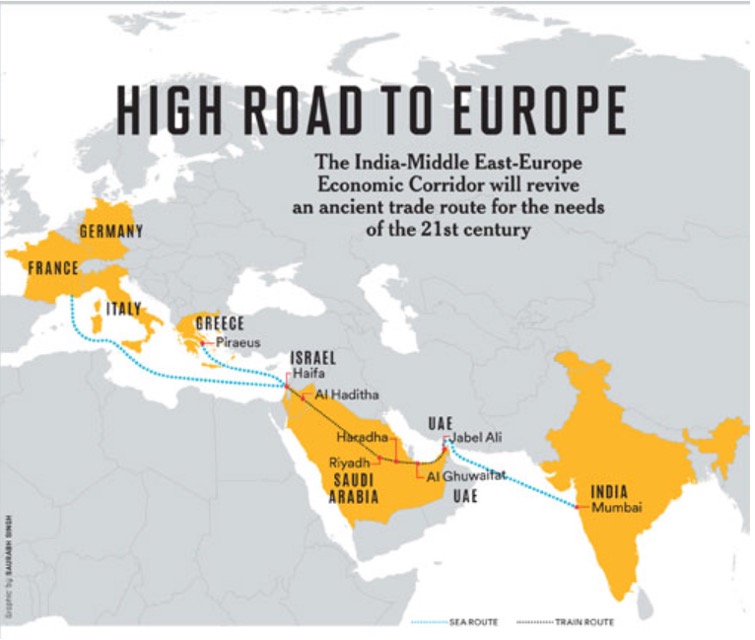
Future Prospects: The Corridor of Promise
With each step along this corridor, we walk not only through the pages of history but also towards the horizon of a promising future—one where cultures converge, challenges are met, cherishing the stories it has to tell and a global tapestry of human cooperation unfolds before us.
Written by – Lucksh Mota
Edited by – Rajan Patel

